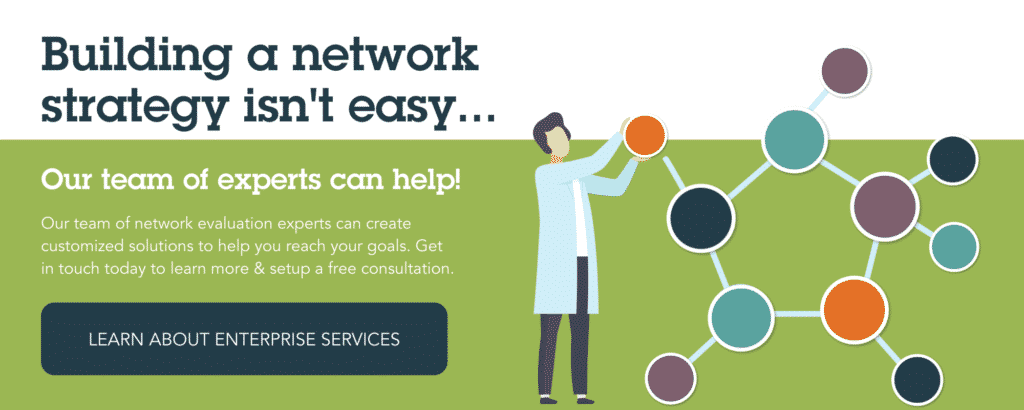Relationship Budgeting: Building Networks with Intent

A bigger network is a better network… right? That’s what most of us learn our entire lives. More friends, partners and network members provide more ideas, more opportunities, and more connections in turn. More is better… or is it a problem? When asked what’s limiting their work, most network leaders say it’s limited time, money or resources. There simply aren’t enough hours in the day to build a network with everyone. You have to start to pick and choose who to partner with, rather than saying yes to anyone and everyone. At Visible Network Labs, we call this intentional network-building process “relationship budgeting,” choosing how to spend your resources maintaining or building partnerships.
Relationship Budgeting: A Relatively Simple Idea
At the core, relationship budgeting is a simple concept. How can you create a network with the least number of ties required to accomplish your goal? In practice, this becomes far more difficult to sort out. Every partner in a network provides various resources and types of value to the collaborative. Deciding which are key to your mission, and which partner should play which role, requires data and evidence to make informed decisions. The alternative means going along based on gut or instinct, both prone to error. Data does not lie.
An Example of Budgeting in Action
For example, consider a community coalition combating poverty and homelessness. They identify the thirty organizations relevant to their work, and begin to prioritize where they fit in. Those who bring significant resources to bear, like local business sponsors and an influential politician, are given significant time in the resource budget. However those who have the strongest mission alignment are also prioritized for involvement. This helps keep the network focused on their common goal. Finally, those groups that are influential and powerful often face numerous requests for involvement. Keep connections with them minimal and focus on identifying one role they can play. Limit requests for other involvement to spend your relationship budget elsewhere.
Relationship Budgeting Means Thinking Strategically About Relationships
At the end of the day, relationship budgeting really just means being strategic in how you build a network. Instead of working with a “more is better” mentality, think critically about each new partner or connection and how they fit into the larger network mission. Often, we fear that by not inviting partners to everything we leave them feeling left out. However we know we feel overwhelmed when we’re on the receiving side. Make sure all know they’re always welcome, while limiting specific invitations to when they can play their key role.
We can Help You Collect the Right Data to Budget Relationships
Relationship budgeting isn’t easy, but it’s the best way to create a more strategic network using data and evidence. Our PARTNER Platform is a powerful tool for collecting data that matters and helps making these decisions. Click here to learn more about our network data tools, here for our training programs, and here for our consulting services. We look forward to connecting!

About the Author: Alex Derr, M.P.A.
Director of Marketing & Communications
Alex joined VNL in 2017, originally supporting our events. He now helps manages our communications and marketing strategy and content development work. Alex creates blogs, infographics, reports, and other content while managing our web and social media presence. He also runs our email marketing campaigns, tracks analytics, and conducts market research to drive our strategy. He supports our entire team with copywriting, graphic design and research, and helps with events, webinars, demos, and other online learning. When he isn’t at work Alex spends his time climbing 14ers (30 done, 28 to go!) and blogging on his own website, The Next Summit Blog.





